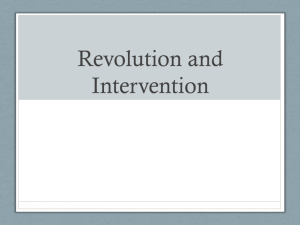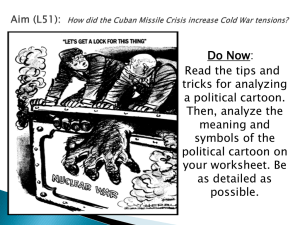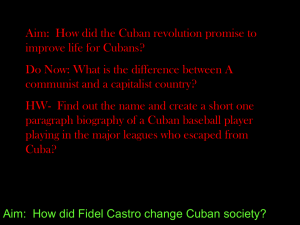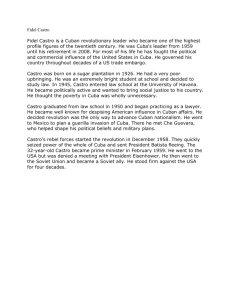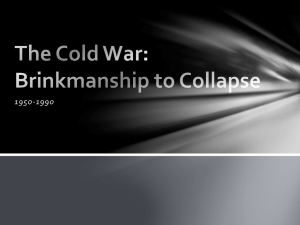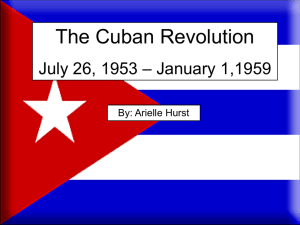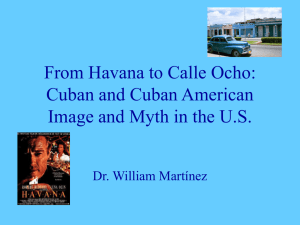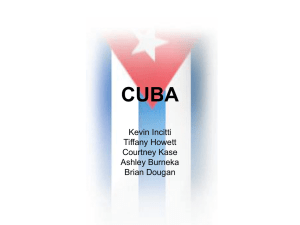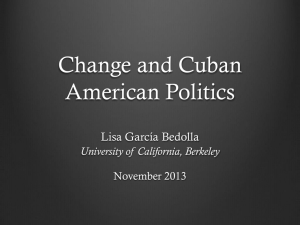Intro to the Red Umbrella
advertisement
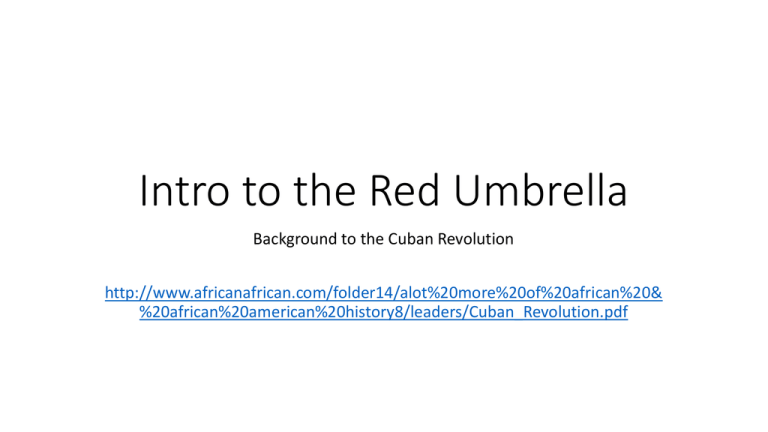
Intro to the Red Umbrella Background to the Cuban Revolution http://www.africanafrican.com/folder14/alot%20more%20of%20african%20& %20african%20american%20history8/leaders/Cuban_Revolution.pdf Background Cuba was a Spanish colony – one of the wealthiest in Latin America • Economy based on sugar exports to US and Europe • Spanish controlled the nation politically, economically and socially • Poverty: Large underclass of Blacks (descendants of slaves) and poor mestizos Cuban Sugar Plantation 1898 Spanish-American War US occupied Cuba from 1899-1902 US helped to write new Cuban Constitution modeled on US Constitution Huge US investments in Cuban sugar ($200 million by 1913) This was 1/5th of all US investment in Latin America at the time From 1902-1953 US sent soldiers several times to protect US investments Attempted Revolution of 1933 200,000 Cuban sugar workers led an uprising in 1933 In the chaos, a group of military leaders took control – led by Fulgencio Batista He continued to rule behind the scenes in Cuba until 1952 Batista Took over in a coup in 1952 Pro-US dictator – strong ties to the US • Maintained dependence on sugar and protected US investments Cuban elites (the wealthy) liked Batista because he favored them • Unpopular among poor Cubans – most people This was the time that Havana was the hot spot for US tourists--night clubs, gambling…. The Cuban Revolution In the 1950s, Batista was driven from the country and the cities were seized by rebels. There was a lot of support for a revolution to remove Batista. Fidel Castro Fidel Castro led the revolution and shortly after became Cuba’s leader. Castro became popular for his anti-US policies because Cubans saw US as having mistreated them. Why did the Revolution happen? Sugar The Cuban economy was based mainly on sugar Economy rose and fell on sugar – seasonal unemployment high Most of the sugar plantations were in the hands of foreign (US mostly) investors or wealthy upper class Cubans Anti-US Feelings Anti-US resentment since the Spanish-American War. A great deal of resentment towards US control of Cuban economy and government. Unstable Government Since Independence, Cuba had no real stable government. Power was in the hands of the elites (the wealthy). US essentially ran Cuba 3 different times from 1900s-1930s. Inequity There was large gap between rich and poor. Rich elites were white, a small % of the population, and held most of the land. The rest of nation was mestizos and Afro-Cuban and poor. Batista He ruled Cuba from 1952-1959 Did not make life better. Repression – mistreated citizens. At first the U.S. supported Batista, but as conditions worsened in Cuba, US pulled support. Eventually even the Cuban middle class turned against Batista. Fidel Castro Castro defeated Batista’s forces. In 1959 Castro began to move Cuba towards a more socialist/communist government. CUBA Fidel Castro Castro wanted to have the government take over US and private companies and businesses. By October of 1959 all US-owned businesses were controlled by the Cuban government. Castro’s Promises Free education for everyone Health care for everyone Child care Housing Castro’s Promises Castro also had a sense of humor, which was part of the reason why so many people initially liked him. Castro’s Promises For example, he promised that the government would provide free beards just like his to all men, women, and children who were loyal to the Revolution. People really liked this promise. Castro’s Promises The hat, cigar, and fancy green uniform were bonuses promised to Cubans who were especially good. So, How’d This Whole Cuban Revolution Thing Work Out, Anyway? • There were some benefits such as improved access to health care and education. But… • • • • People’s freedoms were restricted. Government jailed opponents and spied on citizens. The economy struggled to provide jobs. Castro’s policies led many Cubans to leave country, many for the U.S. A refugee Cuban family arriving in Miami in the 1960s. And finally, time for some cartoons. The car represents the Cuban economy (jobs, buying, and selling) What is the artist’s opinion about Castro and the Cuban Revolution? The main idea of this cartoon is…?
